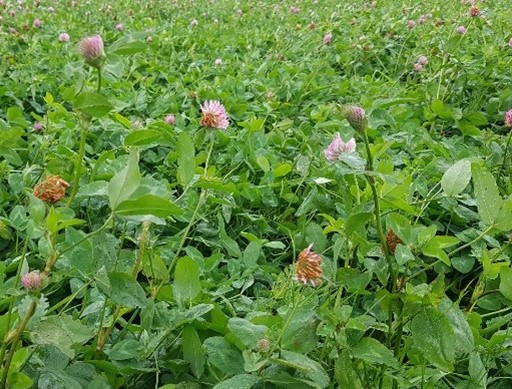How Do I Make More Of My Fertiliser - Part 3 Management
With fertiliser prices continuing to rise daily, it has begun to sharpen the mind of many as how to make the best use of the fertiliser available to you.
There is no single answer, and none of the following suggestions below are right or wrong but just focusing on Management Practices.
Measure Grass Growth:
Measure your grass growth to see which fields are responding best to fertiliser application and which are producing the best yields over the course of the season. The best grass ley should be producing over 13.5 tDM/ha, whereas a five-year-old ley might only produce 6.5 tDM/ha over the course of the season. Would you apply the same level of N to both?
Invest In Better Varieties:
If your grass leys are older and weedier, they are going to be less efficient and therefore less responsive to any fertiliser spread on them. Invest in some new leys, ensuring your mixes use varieties from the recommended list, to make sure you get the best grasses for your farm. A new ley would give you on average an ME of 12MJ/kgDM, so at a yield of 13.5tDM/ha an energy yield of 162,000MJ/ha. A five-year-old ley would give you an average 10.8MJ/kgDM, so at a yield of 6.5tDM/ha and energy yield of 70,200MJ/ha. That equates to a loss of 91,800MJ/ha ME, or at 5.4MJ/litre 17,000 litres of extra milk per ha, at 30p/l a loss in income of £5,100/ha!
 Plant Clover:
Plant Clover:
Sounds obvious but plant clover. Our seed supplier says that only 10% of the clovers grown in the UK now compared to the 1970s! Potentially there is 100-150kg N per acre available to your grassland when clover is sown at 2kg/ac. Even before the recent rise in prices this autumn I have had multiple conversations with people regarding planting clover. If you feel you have a broadleaf weed problem in the reseed area its more than possible to deal with this. Plant the grass in the autumn, and providing conditions are right, spray the broadleaf weeds in both the autumn and the spring before overseeding with clover in the spring. There are a variety of ways of doing this. Management is the difficult part but key.
Timely Application:
Make sure your applications of fertiliser are timely, eg Spring application after you have had five days of soil temperature above five degrees centigrade, so 5x5! Also, as the season progresses use protected nitrogen, rather than unprotected nitrogen. There really is no excuse now for volatilisation of urea fertiliser when the temperature rises. I know there is a greater headline price of approximately £30/t but if you factor in an industry standard of 10% losses it works out at approximately the same cost per unit N. The reality is volatilisation can be anywhere between 5-50% depending on the conditions. The other benefit with protected urea, as a member once said to me was, you don’t have to be 100% accurate in the timing of your application. The Protected Urea will sit there until you do get the moisture, and so you can sleep safer knowing it will do its job when it can.
For more information to look at reducing N use without reducing output, then please call FAR registered Dairy Nutritionist & CowSignals® Master Andrew Jones on 07717 44288 or email andrew@dblbuyinggroup.co.uk

Recent Articles
- Have you Ordered Your Silage Inoculant?
- Growing More Grass With Less Nitrogen, Where Do I start?
- A Real Recognition of The Importance of Food Security or Simply A Reconciling of DEFRA Budgets?
- Silage Sheet Prices Available!
- Are Your Cows at Risk of Grass Staggers?
- Feed Late Afternoon and Calve in Daylight Hours!
- Q Fever
- Aerating Your Soil Without A Machine? – Gerard Finnan
- Why Are You Not doing a Soil Management Plan?
- What are the Rule Changes for Urea Fertiliser in April?

